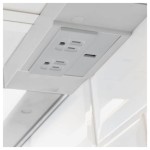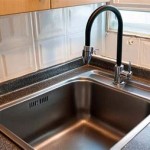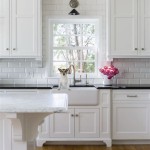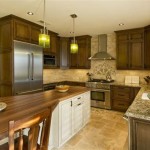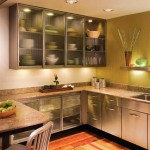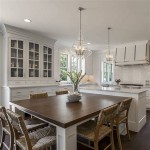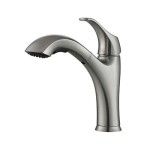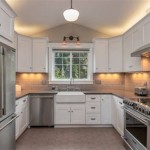Green Paint Ideas For Kitchens: A Comprehensive Guide
Green, a color often associated with nature, tranquility, and freshness, has steadily gained popularity as a compelling choice for kitchen design. It offers a versatile palette, ranging from invigorating bright shades to calming earthy tones, allowing for a customized and visually appealing kitchen space. Selecting the right green paint can transform a kitchen, creating an environment that is both stylish and conducive to a positive cooking and dining experience. This article explores various green paint ideas for kitchens, focusing on different shades, complementary colors, and design considerations to help guide the reader in creating a harmonious and inviting kitchen.
Understanding the Psychology of Green in the Kitchen
Color psychology plays a significant role in interior design, and green is no exception. The human eye perceives green as a restorative and balancing color. In a kitchen setting, this translates to a space that feels calming and less stressful, potentially encouraging healthier eating habits and improved focus during meal preparation. Different shades of green evoke different emotions. For instance, lighter, more pastel greens can create a sense of serenity and spaciousness, while deeper, richer greens can add depth and sophistication. Therefore, understanding the psychological impact of various green hues is crucial for achieving the desired atmosphere in the kitchen.
Furthermore, green is often connected to concepts of health and sustainability, which aligns well with the growing interest in organic foods and eco-conscious living. Incorporating green into the kitchen design can subconsciously promote a feeling of well-being and a connection to the natural world.
Exploring Different Shades of Green for Kitchens
The spectrum of green offers a vast array of options, each with its unique characteristics and suitability for different kitchen styles. The choice of green shade should be carefully considered, taking into account the existing fixtures, lighting, and desired overall aesthetic.
Sage Green: This muted, silvery-green is a popular choice for its understated elegance. It pairs well with natural wood tones, creating a warm and inviting atmosphere. Sage green is particularly suitable for farmhouse-style kitchens or spaces where a subtle, sophisticated look is desired. Its calming effect makes it an excellent choice for kitchens that serve as a central gathering space for the family.
Mint Green: A lighter, more refreshing hue, mint green evokes a sense of cleanliness and airiness. It works well in smaller kitchens, as it can help to visually expand the space. Mint green complements white cabinetry and metallic accents, creating a bright and cheerful ambiance. This shade is often associated with retro or vintage kitchen designs, but it can also be incorporated into more contemporary settings.
Emerald Green: For a bolder and more dramatic statement, emerald green is an excellent choice. This rich, jewel-toned hue adds a touch of luxury and sophistication to the kitchen. It pairs well with gold or brass hardware and dark wood finishes. Emerald green is best suited for larger kitchens or spaces where a focal point is desired. It can be used on cabinets, walls, or even as an accent color to create a striking visual impact.
Olive Green: A more earthy and natural shade, olive green brings a sense of warmth and groundedness to the kitchen. It complements natural stone countertops and rustic wood elements. Olive green is well-suited for kitchens with a Mediterranean or Tuscan-inspired design. Its subtle, organic tone creates a comfortable and inviting atmosphere.
Lime Green: A vibrant and energetic shade, lime green is ideal for modern kitchens or spaces where a playful and contemporary look is desired. It pairs well with white or black accents, creating a bold and eye-catching contrast. Lime green is best used sparingly, as an accent color, to avoid overwhelming the space. It can be incorporated through accessories, backsplashes, or a single statement wall.
Complementary Colors and Design Considerations
Selecting the right complementary colors is crucial for creating a balanced and harmonious kitchen design with green paint. The color wheel provides a useful tool for identifying colors that complement green effectively.
White: A classic and versatile choice, white complements almost any shade of green. It creates a clean and crisp contrast, highlighting the green and making the space feel brighter and more spacious. White is particularly well-suited for pairing with darker shades of green, such as emerald or forest green.
Wood Tones: Natural wood tones, such as oak, maple, or walnut, complement green beautifully, creating a warm and organic feel. The combination of green and wood is particularly effective in farmhouse-style or transitional kitchens. The warmth of the wood balances the coolness of the green, creating a comfortable and inviting atmosphere.
Gray: A neutral and sophisticated color, gray pairs well with green, creating a calming and elegant atmosphere. Light gray works well with lighter shades of green, such as sage or mint, while darker gray complements richer greens, such as emerald or olive. Gray can be used on countertops, backsplashes, or as an accent color to create a subtle and refined look.
Gold and Brass: Metallic accents, such as gold or brass hardware and fixtures, add a touch of luxury and sophistication to a green kitchen. Gold and brass complement emerald green particularly well, creating a glamorous and opulent look. These metallic accents can be incorporated through cabinet pulls, faucets, lighting fixtures, or even decorative accessories.
Black: For a bold and dramatic contrast, black can be used as an accent color in a green kitchen. Black countertops, backsplashes, or appliances can create a striking visual impact, particularly when paired with lighter shades of green. Black is best used sparingly, as too much black can make the space feel dark and cramped.
Beyond color, several other design considerations are essential when incorporating green paint into the kitchen.
Lighting: Adequate lighting is crucial for showcasing the beauty of green paint. Natural light is ideal, but artificial lighting should also be carefully considered. Warm lighting can enhance the warmth of earthy greens, while cool lighting can accentuate the freshness of lighter greens. Consider the placement of lighting fixtures to ensure that the green paint is evenly illuminated.
Cabinetry: The style and color of the cabinetry should complement the green paint. White cabinets are a classic choice that works well with most shades of green. Wood cabinets can create a warm and organic feel, while darker cabinets can add depth and sophistication. The hardware on the cabinets should also be carefully selected to complement the overall design.
Backsplash: The backsplash provides an opportunity to add texture and visual interest to the kitchen. A tile backsplash in a complementary color can create a cohesive and stylish look. Consider using natural stone, glass, or ceramic tiles to add depth and dimension to the space. The backsplash can also be used to introduce a pop of color or a subtle pattern.
Countertops: The choice of countertops should complement the green paint and the overall kitchen design. Natural stone countertops, such as granite or marble, can add a touch of luxury and sophistication. Quartz countertops are a durable and low-maintenance option that comes in a variety of colors and patterns. Wood countertops can create a warm and rustic feel.
Accessories: Accessories, such as rugs, curtains, and decorative items, can be used to add personality and style to the kitchen. Choose accessories in complementary colors and materials to create a cohesive and inviting space. Consider incorporating plants and greenery to enhance the natural feel of the green paint.
Texture: Introduce varying textures to create visual interest and depth. Consider textured wallpaper or utilizing different paint finishes to add dimension to the walls. Layering textures through fabrics, rugs, and accessories enhances the overall aesthetic.
Test Paint Colors: Always test paint colors in the actual kitchen space before committing to a full application. Varying lighting conditions throughout the day can significantly alter the appearance of paint colors. Testing allows for an informed decision and ensures the chosen shade aligns with the desired outcome.

27 Kitchen Paint Color Ideas That Will Makeover Your

65 Best Kitchen Paint Color Ideas And Combinations For 2025
?strip=all)
Seven Green Kitchen Ideas To Welcome Spring Crown Paints

52 Best Kitchen Paint Color Ideas And Combinations For 2025

20 Green Kitchen Ideas For A Fresh Cooking Space Real Homes

Green Kitchens Design Ideas Schemes Farrow Ball

Green Paint Colors Expert Picks Sherwin Williams

Green Kitchen Paint Colors Pictures Ideas From Hgtv

7 Vibrant Green Kitchen Cabinets Ideas Paint Colors

10 Beautiful Kitchens With Green Walls
See Also

